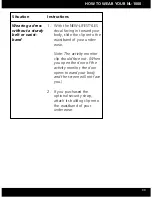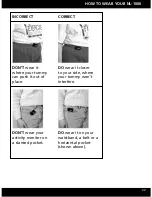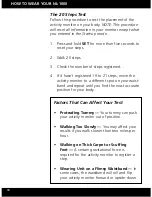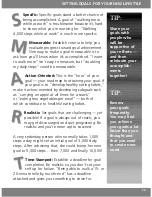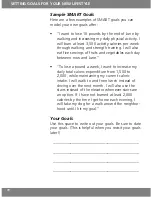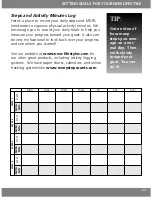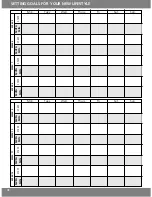
SETTING GOALS FOR YOUR NEW LIFESTYLE
38
TIP:
Share your
goals with
people who
will be
supportive of
your efforts —
and then
celebrate your
accomplish-
ments
together!
TIP:
Review
your goals
frequently.
You may find
you achieve
your goals a lot
faster than you
thought and
that you need
to create new
ones!
Specific:
Specific goals stand a better chance of
being accomplished. A goal of “walking more
while at work” is troublesome because it’s hard
to know what you’re working for. “Walking
4,000 steps while at work” is much more specific.
Measurable:
Establish criteria to help you
evaluate progress toward goal achievement.
One way to make a goal measurable is to
ask how you’ll know when it’s accomplished. “I want
to walk more” isn’t easy to measure, but “doubling
my daily steps” could be measurable.
Action-Oriented:
This is the “how” of your
goal — your road map to attaining your goal. If
your goal is to “develop healthy eating habits,”
make it action-oriented by developing subgoals such
as “carrying an apple at all times for a snack”
or “eating two vegetables per meal” — both of
which contribute to healthful eating habits.
Realistic:
Set goals that are challenging — yet
possible! If a goal is always out of reach, you
may get discouraged and quit progressing. Be
realistic and you’re more apt to succeed.
A very sedentary person who normally takes 1,000
steps a day might set an initial goal of 3,000 daily
steps. After achieving that, she could bump her new
goal to 5,000 steps… then 7,000 and finally 10,000!
Time-Stamped:
Establish a deadline for goal
completion. Be realistic so you don’t set your-
self up for failure. “Being able to walk a 15- or
20-minute mile by month-end” has a deadline
attached and gives you something to strive for.







